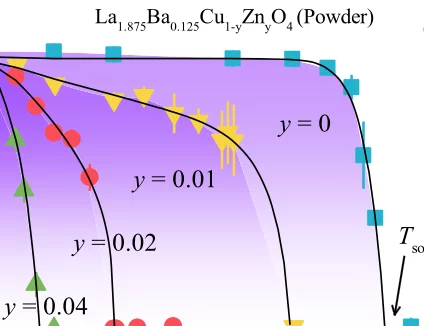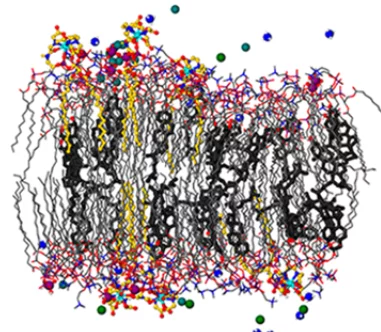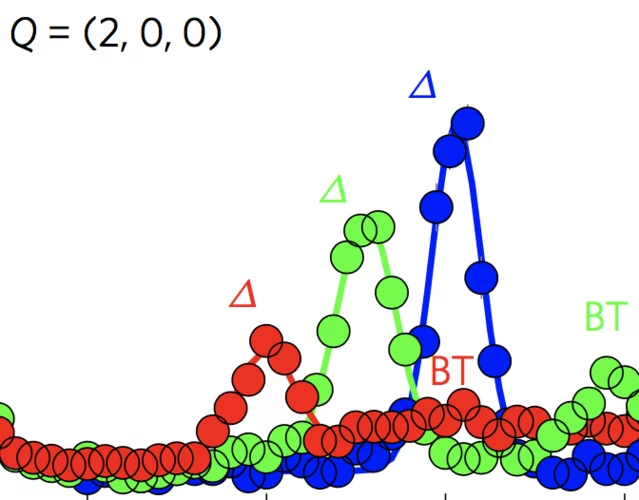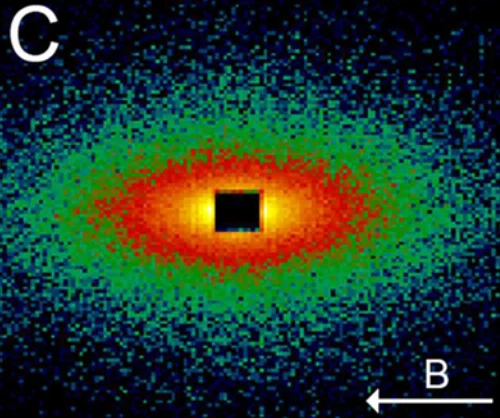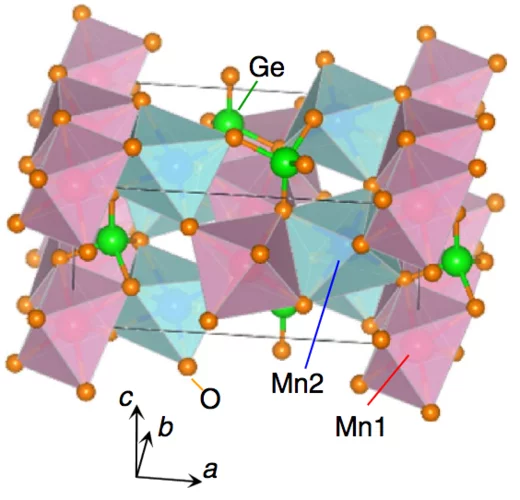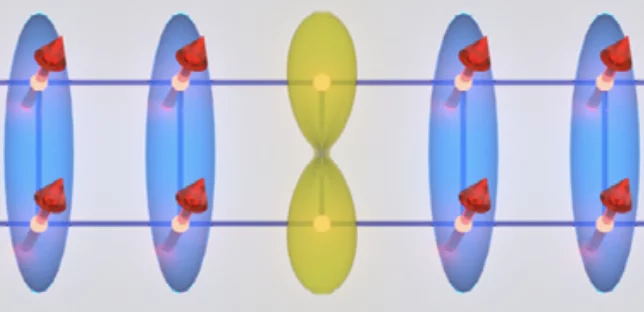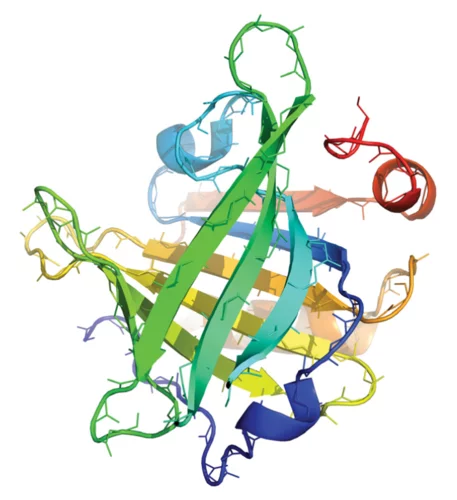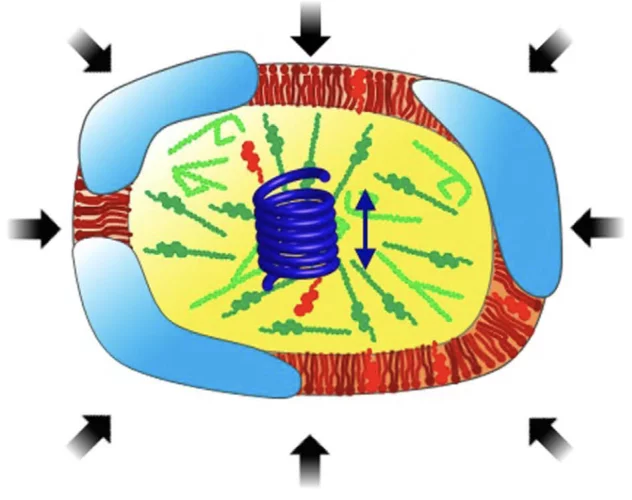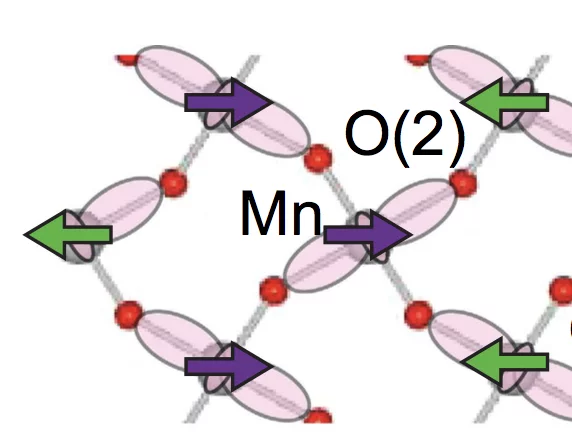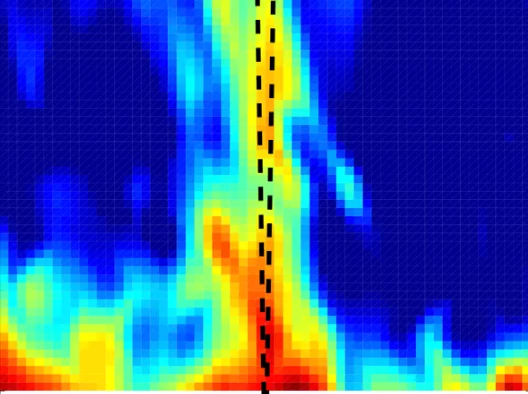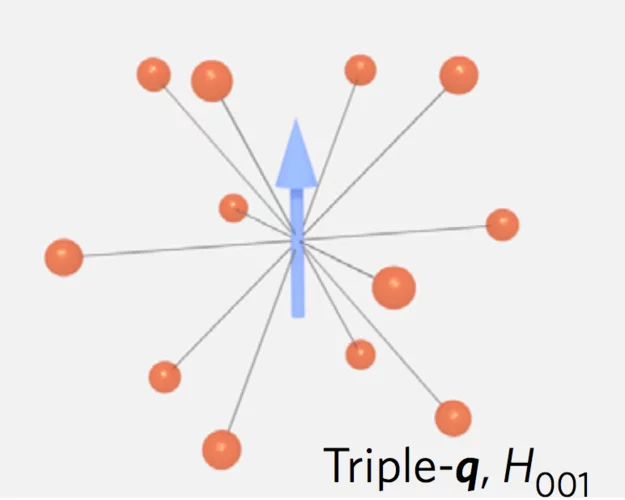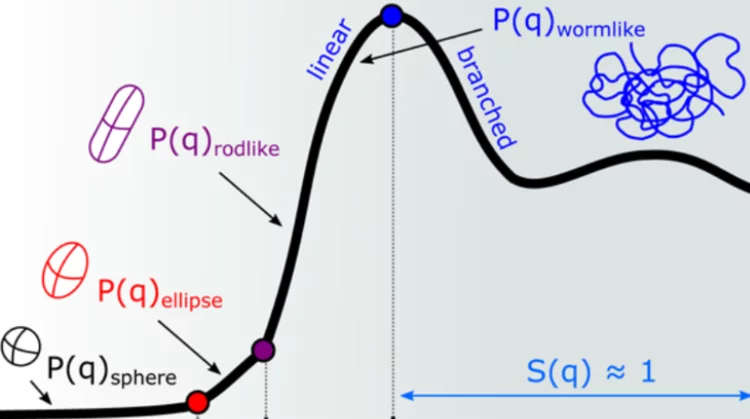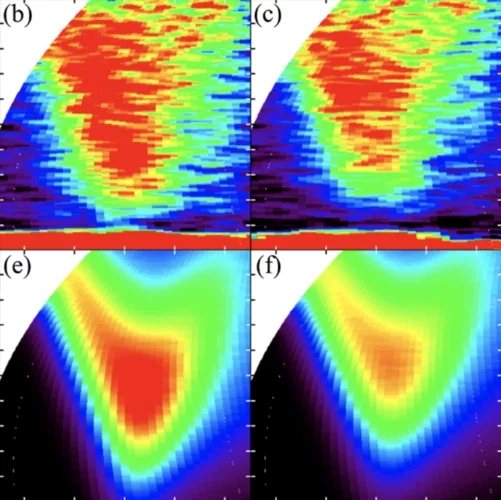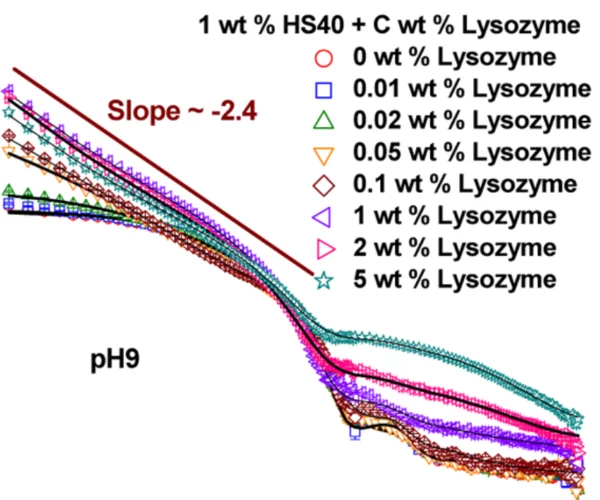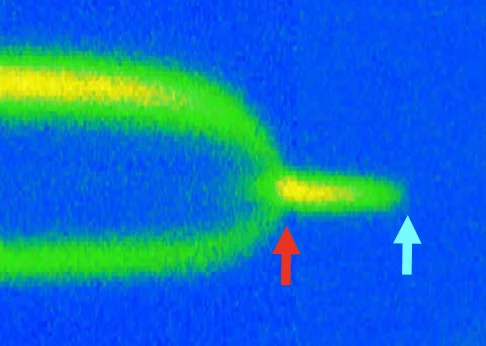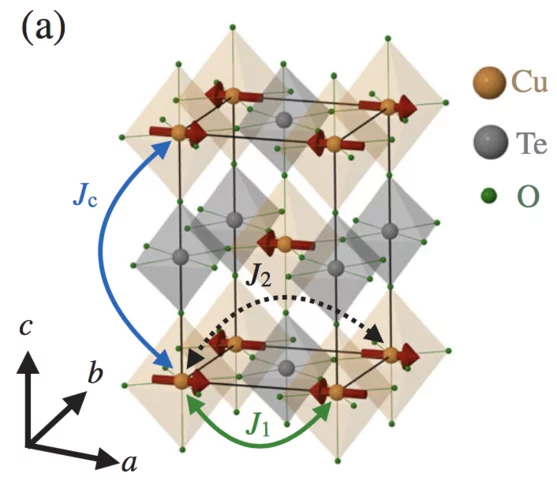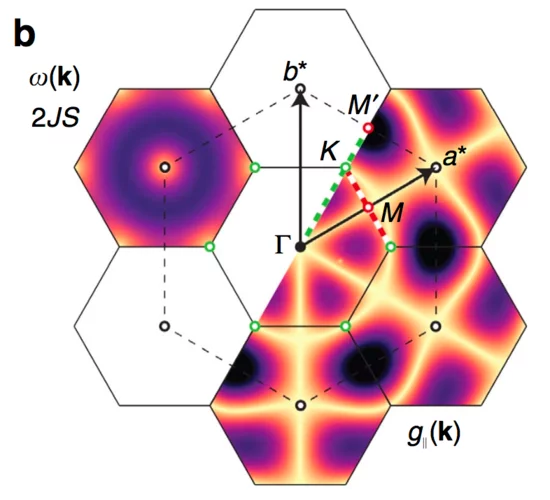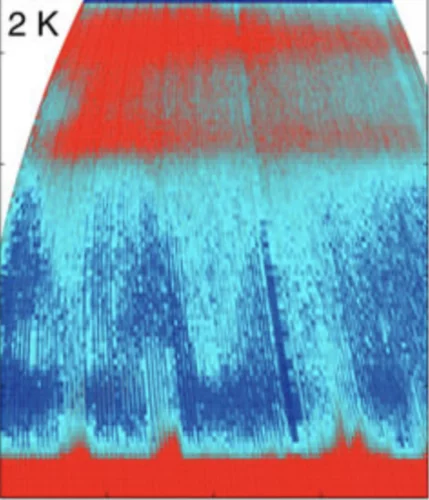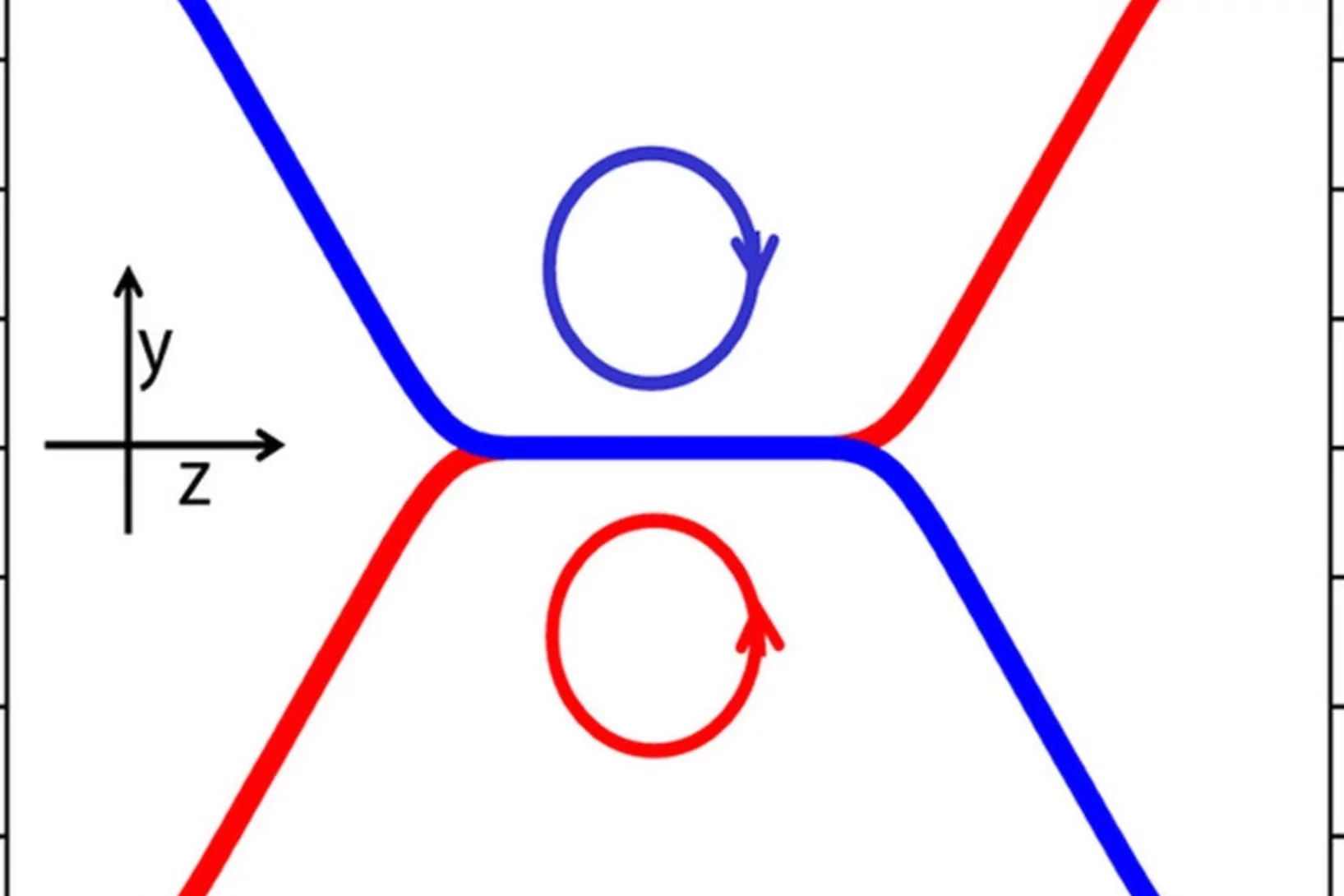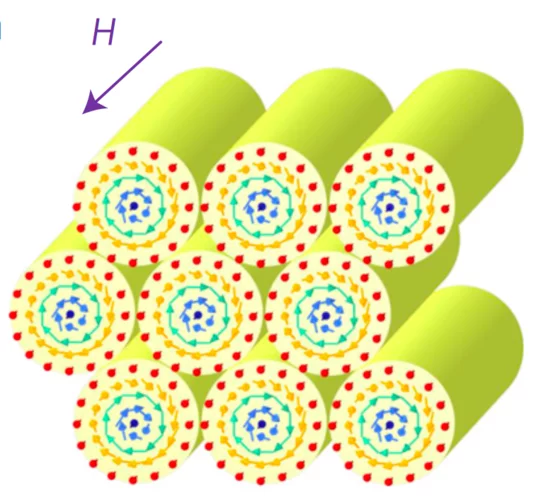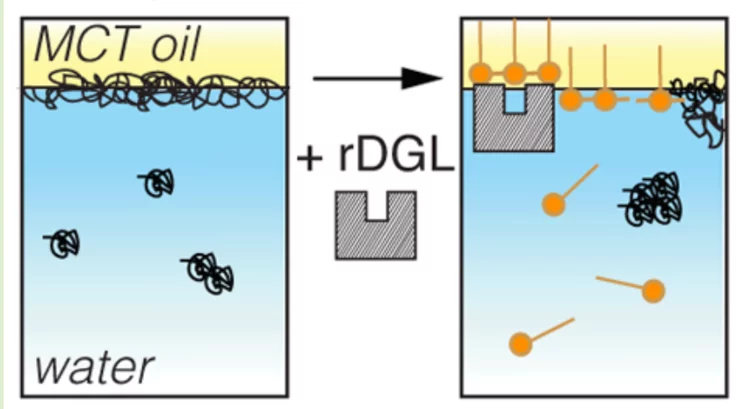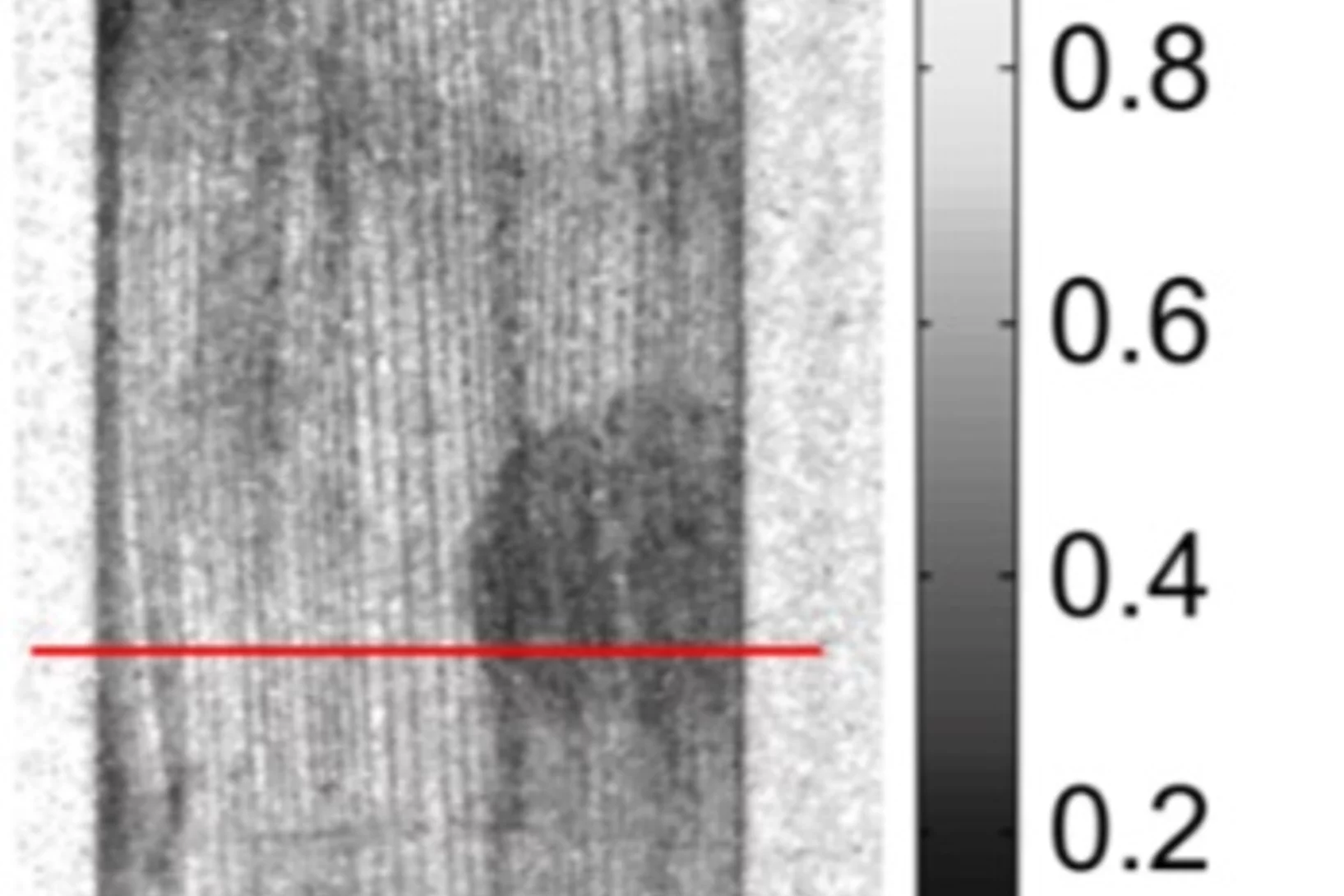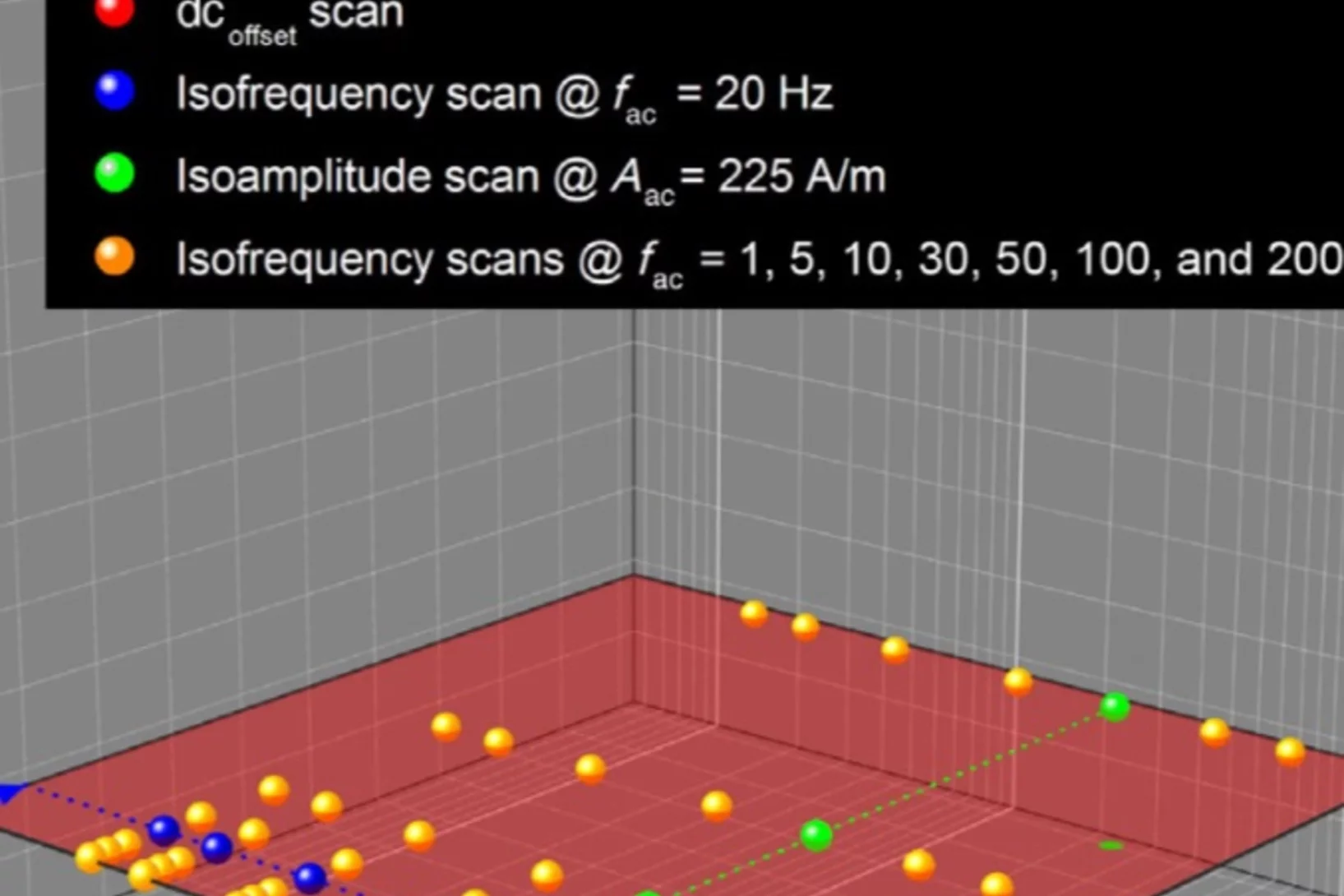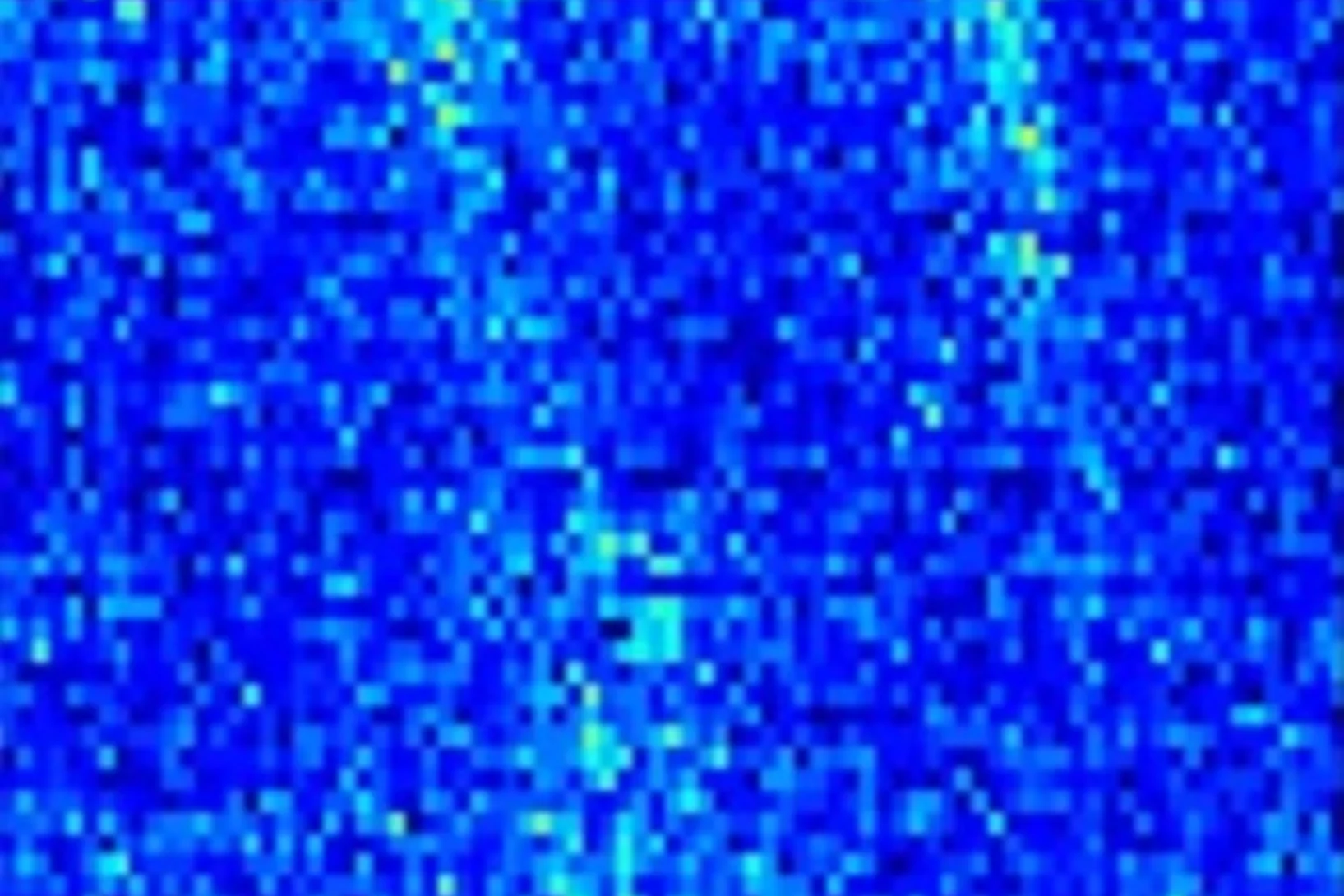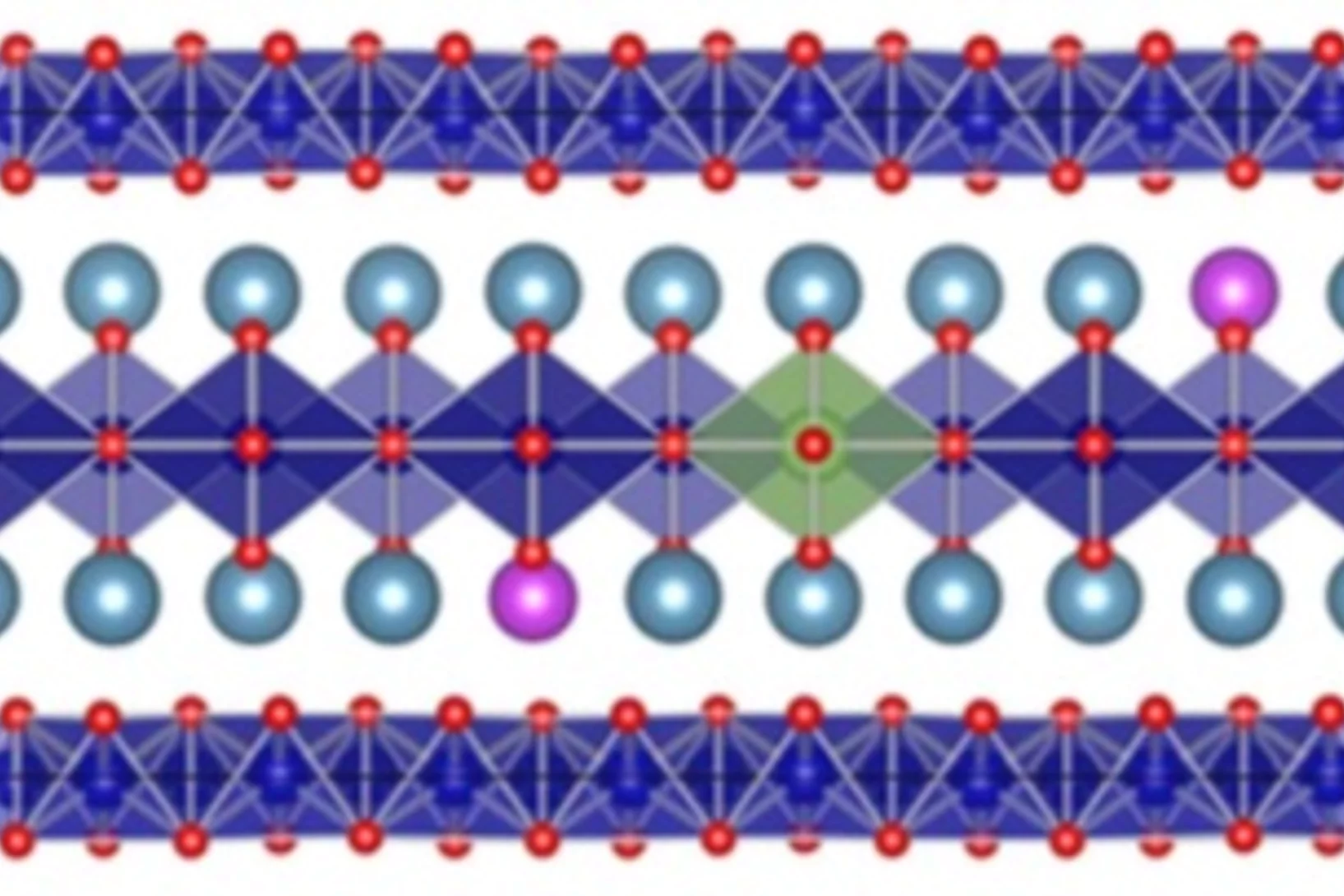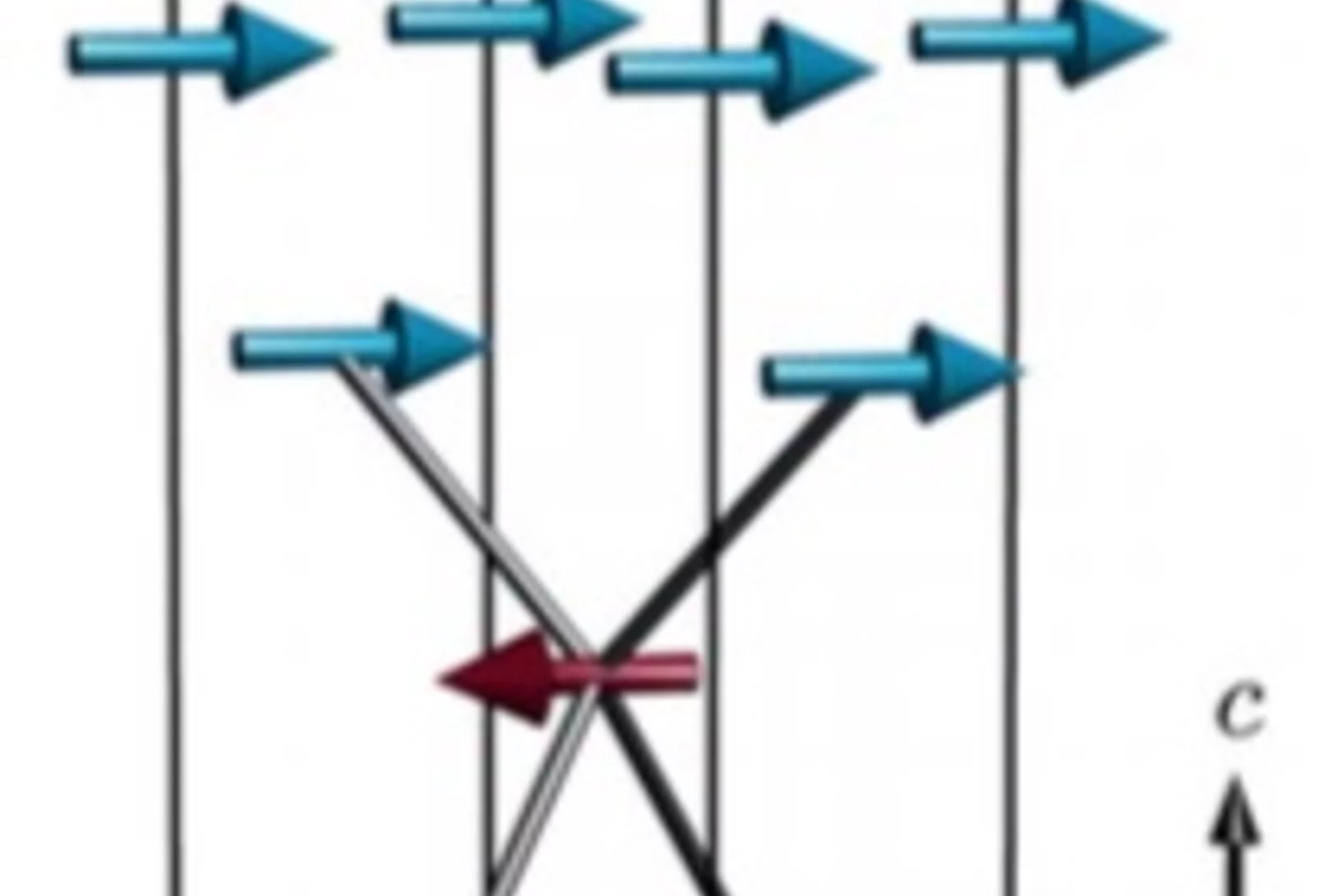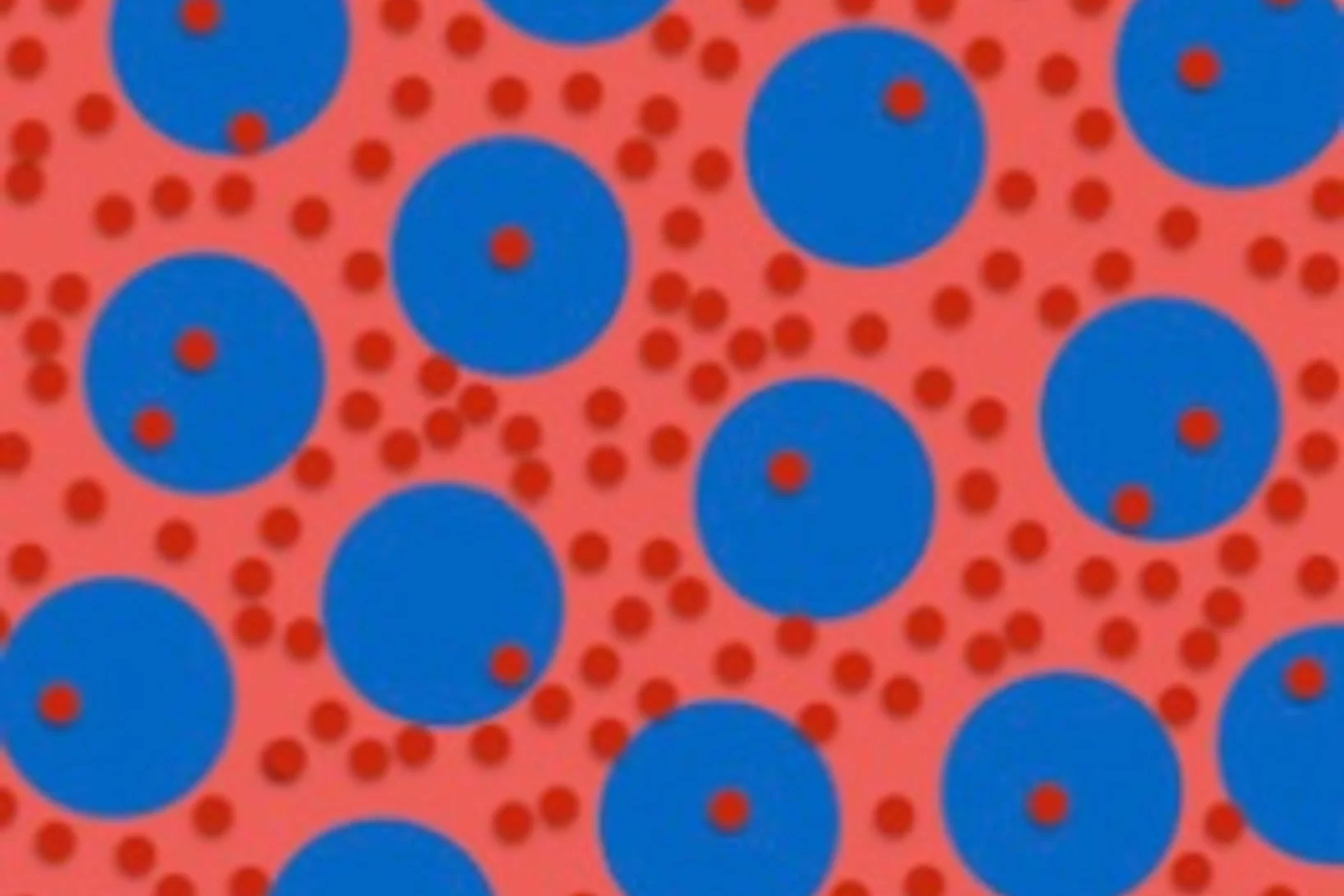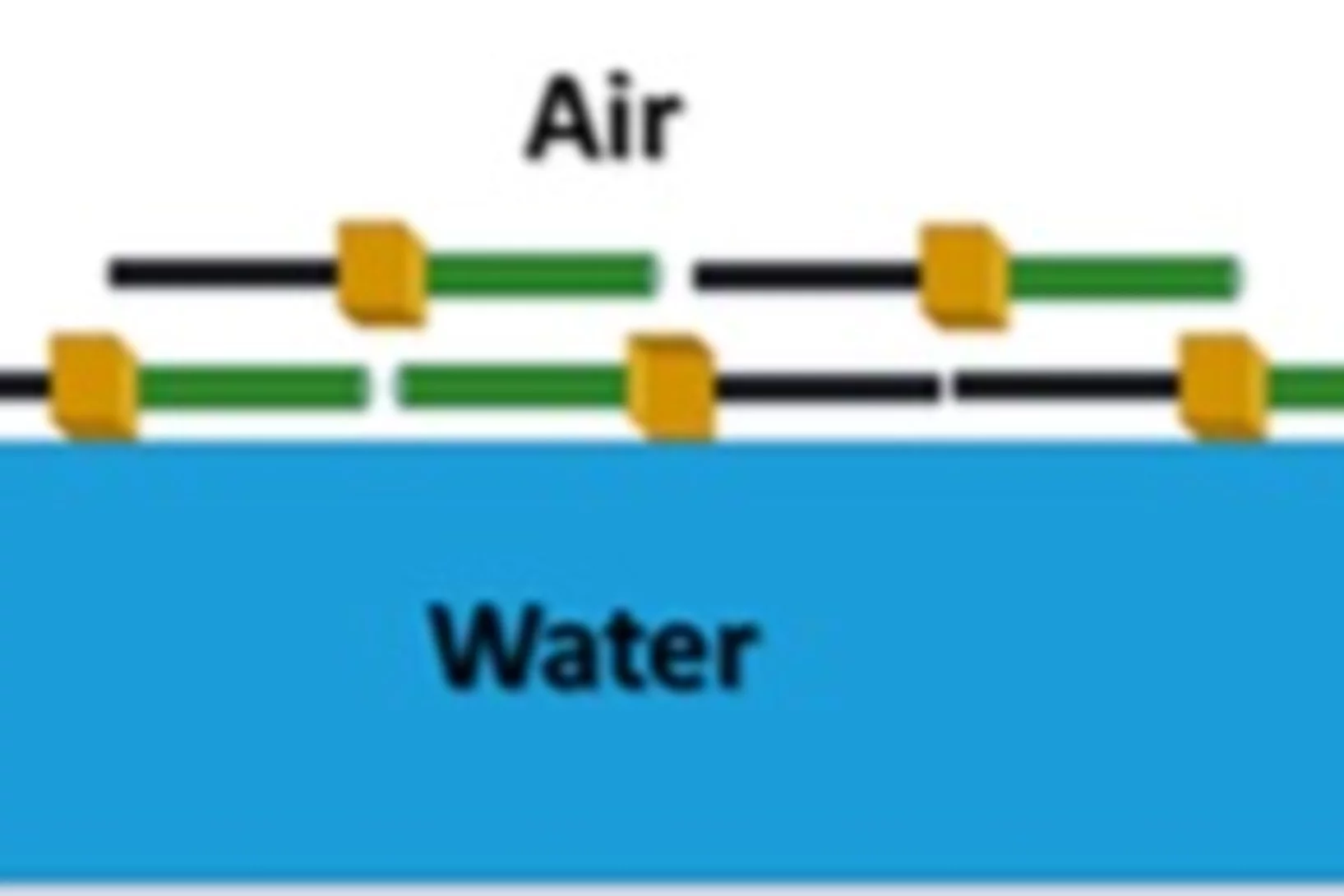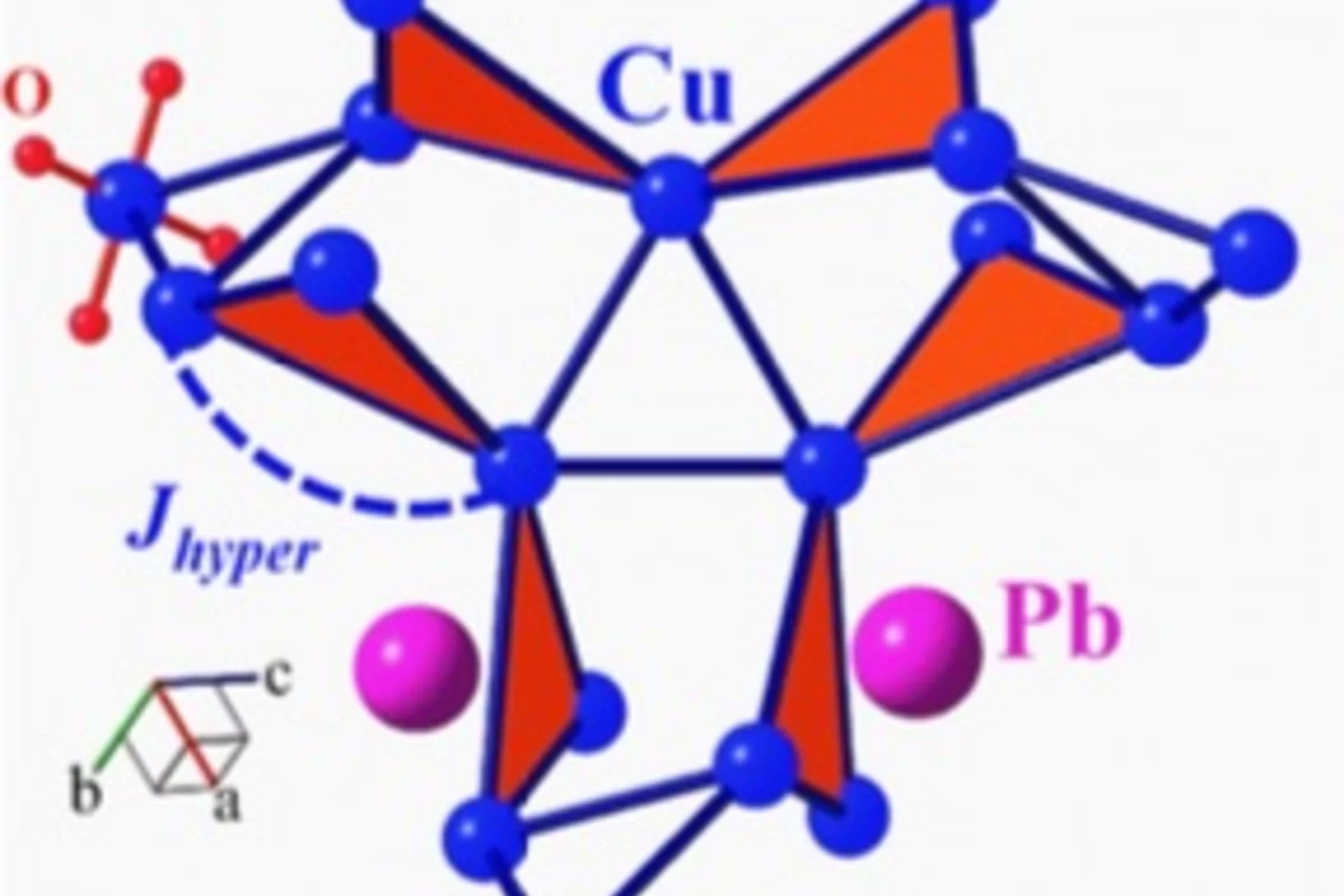Show filters
Complementary Response of Static Spin-Stripe Order and Superconductivity to Nonmagnetic Impurities in Cuprates
We report muon-spin rotation and neutron-scattering experiments on nonmagnetic Zn impurity effects on the static spin-stripe order and superconductivity of the La214 cuprates. Remarkably, it was found that, for samples with hole doping x ≈ 1/8, the spin-stripe ordering temperature Tso decreases linearly with Zn doping y and disappears at y ≈ 4%, demonstrating a high sensitivity of static spin-stripe order to impurities within a CuO2 plane.
Understanding the Enhanced Magnetic Response of Aminocholesterol Doped Lanthanide-Ion-Chelating Phospholipid Bicelles
Cholesterol (Chol-OH) and its conjugates are powerful molecules for engineering the physicochemical and magnetic properties of phospholipid bilayers in bicelles.
4-spin plaquette singlet state in the Shastry–Sutherland compound SrCu2(BO3)2
The study of interacting spin systems is of fundamental importance for modern condensed-matter physics. On frustrated lattices, magnetic exchange interactions cannot be simultaneously satisfied, and often give rise to competing exotic ground states. The frustrated two-dimensional Shastry–Sutherland lattice realized by SrCu2(BO3)2 is an important test to our understanding of quantum magnetism.
Methods for Generating Highly Magnetically Responsive Lanthanide-Chelating Phospholipid Polymolecular Assemblies
Mixtures of 1,2-dimyristoyl-sn-glycero-3-phosphocholine (DMPC) and its lanthanide ion (Ln3+) chelating phospholipid conjugate, 1,2-dimyristoyl-sn-glycero-3-phospho-ethanolamine-diethylene triaminepentaacetate (DMPE-DTPA), assemble into highly magnetically responsive polymolecular assemblies such as DMPC/DMPE-DTPA/Ln3+ (molar ratio 4:1:1) bicelles.
Coupled multiferroic domain switching in the canted conical spin spiral system Mn2GeO4
Despite remarkable progress in developing multifunctional materials, spin-driven ferro-electrics featuring both spontaneous magnetization and electric polarization are still rare. Among such ferromagnetic ferroelectrics are conical spin spiral magnets with a simultaneous reversal of magnetization and electric polarization that is still little understood. Such materials can feature various multiferroic domains that complicates their study.
Bound States and Field-Polarized Haldane Modes in a Quantum Spin Ladder
The challenge of one-dimensional systems is to understand their physics beyond the level of known elementary excitations. By high-resolution neutron spectroscopy in a quantum spin-ladder material, we probe the leading multiparticle excitation by characterizing the two-magnon bound state at zero field.
Amyloid fibril systems reduce, stabilize and deliver bioavailable nanosized iron
Iron-deficiency anaemia (IDA) is a major global public health problem. A sustainable and cost-effective strategy to reduce IDA is iron fortification of foods, but the most bioavailable fortificants cause adverse organoleptic changes in foods. Iron nanoparticles are a promising solution in food matrices, although their tendency to oxidize and rapidly aggregate in solution severely limits their use in fortification.
High hydrostatic pressure specifically affects molecular dynamics and shape of low-density lipoprotein particles
Lipid composition of human low-density lipoprotein (LDL) and its physicochemical characteristics are relevant for proper functioning of lipid transport in the blood circulation. To explore dynamical and structural features of LDL particles with either a normal or a triglyceride-rich lipid composition we combined coherent and incoherent neutron scattering methods.
Tuning the multiferroic mechanisms of TbMnO3 by epitaxial strain
A current challenge in the field of magnetoelectric multiferroics is to identify systems that allow a controlled tuning of states displaying distinct magnetoelectric responses. Here we show that the multiferroic ground state of the archetypal multiferroic TbMnO3 is dramatically modified by epitaxial strain. Neutron diffraction reveals that in highly strained films the magnetic order changes from the bulk-like incommensurate bc-cycloidal structure to commensurate magnetic order.
Sub-pixel correlation length neutron imaging: Spatially resolved scattering information of microstructures on a macroscopic scale
Neutron imaging and scattering give data of significantly different nature and traditional methods leave a gap of accessible structure sizes at around 10 micrometers. Only in recent years overlap in the probed size ranges could be achieved by independent application of high resolution scattering and imaging methods, however without providing full structural information when microstructures vary on a macroscopic scale.
Effects of Quantum Spin-1/2 Impurities on the Magnetic Properties of Zigzag Spin Chains
We investigate the effect of Co2+ (spin-1/2) impurities on the magnetic ground state and low-lying spin excitations of the quasione-dimensional spin-1/2 antiferromagnet SrCuO2 by means of neutron scattering, muon spin spectroscopy, and bulk (ac and dc) magnetic susceptibilities. We found that dilute Co doping induces an Ising-like anisotropy and enhances the magnetic ordering temperature rather significantly, but preserves the gapless nature of the spin excitations.
Spiral spin-liquid and the emergence of a vortex-like state in MnSc2S4
Spirals and helices are common motifs of long-range order in magnetic solids, and they may also be organized into more complex emergent structures such as magnetic skyrmions and vortices. A new type of spiral state, the spiral spin-liquid, in which spins fluctuate collectively as spirals, has recently been predicted to exist.
Intermicellar Interactions and the Viscoelasticity of Surfactant Solutions: Complementary Use of SANS and SAXS
In ionic surfactant micelles, basic interactions among distinct parts of surfactant monomers, their counterion, and additives are fundamental to tuning molecular self-assembly and enhancing viscoelasticity. Here, we investigate the addition of sodium salicylate (NaSal) to hexadecyltrimethylammonium chloride and bromide (CTAC and CTAB) and 1-hexadecylpyridinium chloride and bromide (CPyCl and CPyBr), which have distinct counterions and headgroup structures but the same hydrophobic tail.
Magnetic Field Dependence of Excitations Near Spin-Orbital Quantum Criticality
The spinel FeSc2S4 has been proposed to realize a near-critical spin-orbital singlet (SOS) state, where entangled spin and orbital moments fluctuate in a global singlet state on the verge of spin and orbital order.
Structure and Interaction in the pH-Dependent Phase Behavior of Nanoparticle−Protein Systems
The pH-dependent structure and interaction of anionic silica nanoparticles (diameter 18 nm) with two globular model proteins, lysozyme and bovine serum albumin (BSA), have been studied. Cationic lysozyme adsorbs strongly on the nanoparticles, and the adsorption follows exponential growth as a function of lysozyme concentration, where the saturation value increases as pH approaches the isoelectric point (IEP) of lysozyme.
Tuning magnetic spirals beyond room temperature with chemical disorder
Frustrated magnets with spiral magnetic orders are of high current interest due to their potential for spintronics and low-power magnetoelectric devices. However, their low magnetic order temperatures (typically <100K) greatly restrict their fields of application. Researchers of PSI have demonstrated that the stability domain of the spiral phase in the perovskite YBaCuFeO5 can be enlarged by more than 150K through a controlled manipulation of the Fe/Cu chemical disorder.
Magnetic Excitations and Electronic Interactions in Sr2CuTeO6: A Spin-1/2 Square Lattice Heisenberg Antiferromagnet
Sr2CuTeO6 presents an opportunity for exploring low-dimensional magnetism on a square lattice of S=1/2 Cu2+ ions. We employ ab initio multireference configuration interaction calculations to unravel the Cu2+ electronic structure and to evaluate exchange interactions in Sr2CuTeO6.
Electromagnon dispersion probed by inelastic X-ray scattering in LiCrO2
Lattice vibrations (phonons) in crystals are typically weakly interacting with the electronic and magnetic degrees of freedom, such as charge and spin fluctuations. Researchers of PSI together with collaborators from EPF Lausanne, Japan and USA discovered an unexpectedly strong coupling between lattice vibrations and spin fluctuations in the quantum magnet LiCrO2. The observed magnetoelastic waves or electromagnons carry both electric and magnetic dipole moment.
Magnetodielectric detection of magnetic quadrupole order in Ba(TiO)Cu4(PO4)4 with Cu4O12 square cupolas
In vortex-like spin arrangements, multiple spins can combine into emergent multipole moments. Such multipole moments have broken space-inversion and time-reversal symmetries, and can therefore exhibit linear magnetoelectric (ME) activity. Three types of such multipole moments are known: toroidal; monopole; and quadrupole moments. So far, however, the ME activity of these multipole moments has only been established experimentally for the toroidal moment.
Realizing topological stability of magnetic helices in exchange-coupled multilayers for all-spin-based system
Topologically stabilized spin configurations like helices in the form of planar domain walls (DWs) or vortex-like structures with magnetic functionalities are more often a theoretical prediction rather than experimental realization. In this paper we report on the exchange coupling and helical phase characteristics within Dy-Fe multilayers. The magnetic hysteresis loops with temperature show an exchange bias field of around 1.0 kOe at 10 K.
Robust metastable skyrmions and their triangular–square lattice structural transition in a high-temperature chiral magnet
Skyrmions, topologically protected nanometric spin vortices, are being investigated extensively in various magnets. Among them, many structurally chiral cubic magnets host the triangular-lattice skyrmion crystal (SkX) as the thermo- dynamic equilibrium state. However, this state exists only in a narrow temperature and magnetic-field region just below the magnetic transition temperature Tc, while a helical or conical magnetic state prevails at lower temperatures.
Blocking Gastric Lipase Adsorption and Displacement Processes with Viscoelastic Biopolymer Adsorption Layers
Delayed fat digestion might help to fight obesity. Fat digestion begins in the stomach by adsorption of gastric lipases to oil/water interfaces. In this study we show how biopolymer covered interfaces can act as a physical barrier for recombinant dog gastric lipase (rDGL) adsorption and thus gastric lipolysis.
Magnetization Response of the Bulk and Supplementary Magnetic Domain Structure in High-Permeability Steel Laminations Visualized In Situ by Neutron Dark-Field Imaging
Industrial transformer cores are composed of stacked high-permeability steel laminations (HPSLs). The performance and degree of efficiency of transformers are directly determined by the magnetic properties of each HPSL. In this article, we show how the neutron dark-field image (DFI) allows for the in situ visualization of the locally resolved response of the bulk and supplementary magnetic domain structures in HPSLs under the influence of externally applied magnetic fields.
Frequency-Induced Bulk Magnetic Domain-Wall Freezing Visualized by Neutron Dark-Field Imaging
We use neutron dark-field imaging to visualize and interpret the response of bulk magnetic domain walls to static and dynamic magnetic excitations in (110)-Goss textured iron silicon high-permeability steel alloy. We investigate the domain-wall motion under the influence of an external alternating sinusoidal magnetic field.
On the Interaction between Digitonin and Cholesterol in Langmuir Monolayers
In this article, we describe the effect of a highly hemolytic saponin, digitonin, on model lipids cholesterol and dipalmitoylphosphatidylcholine (DPPC) using a combination of tensiometric (surface pressure and dilatational surface elasticity), spectroscopic (infrared reflection absorption spectroscopy, IRRAS), microscopic (fluorescence microscopy), and scattering techniques (neutron reflectivity, NR, and grazing incidence X-ray diffraction, GIXD).
Phononic Structure Engineering: the Realization of Einstein Rattling in Calcium Cobaltate for the Suppression of Thermal Conductivity
Phonons in condensed matter materials transmit energy through atomic lattices as coherent vibrational waves. Like electronic and photonic properties, an improved understanding of phononic properties is essential for the development of functional materials, including thermoelectric materials. Recently, an Einstein rattling mode was found in thermoelectric material Na0.8CoO2, due to the large displacement of Na between the [CoO2] layers.
Dimensional Reduction in Quantum Dipolar Antiferromagnets
We report ac susceptibility, specific heat, and neutron scattering measurements on a dipolar-coupled antiferromagnet LiYbF4. For the thermal transition, the order-parameter critical exponent is found to be 0.20(1) and the specific-heat critical exponent −0.25(1). The exponents agree with the 2D XY/h4 universality class despite the lack of apparent two-dimensionality in the structure.
The role of ions in the self-healing behavior of soft particle suspensions
Understanding when a material crystallizes is of fundamental importance in condensed matter. In many materials, the presence of point defects suppresses crystallization. Surprisingly, colloidal hydrogels can overcome this limitation: A small number of large microgels can spontaneously deswell to fit in the crystal lattice of smaller microgels, thus avoiding the occurrence of point defects.
Semifluorinated Alkanes at the Air–Water Interface: Tailoring Structure and Rheology at the Molecular Scale
Semifluorinated alkanes form monolayers with interesting properties at the air–water interface due to their pronounced amphi-solvophobic nature and the stiffness of the fluorocarbons. In the present work, using a combination of structural and dynamic probes, we investigated how small molecular changes can be used to control the properties of such an interface, in particular its organization, rheology, and reversibility during compression–expansion cycles.
Spin Liquid State in the 3D Frustrated Antiferromagnet PbCuTe2O6: NMR and Muon Spin Relaxation Studies
PbCuTe2O6 is a rare example of a spin liquid candidate featuring a three-dimensional magnetic lattice. Strong geometric frustration arises from the dominant antiferromagnetic interaction that generates a hyperkagome network of Cu2+ ions although additional interactions enhance the magnetic lattice connectivity.
